A Sense of Doubt blog post #1485 - Janelle Asselin: Rape Threats in Comics Fandom all too common
The other day I posted this cool thing about comics:
https://sensedoubt.blogspot.com/2019/03/a-sense-of-doubt-blog-post-1482-whats.html
Written by Janelle Asselin with editing by Ann Elizabeth Moore and art by Katie Cook.
One of my Facebook friends--a comic book fan and a writer whom I know from Kalamazoo, someone whose writing I have supported for years, even buying his new print-to-order serial fiction--wrote in response to the comic strip:
"I can't stand Janelle Asselin."
It may have been "hate"; I am not sure. I can't check as I deleted the comment.
I considered a variety of responses as I did not like the fact that this person wrote that sole line without any support or reasoning for his claim. I think he might admit that he's an irascible and grouchy curmudgeon since his opinions are often reactionary and a bit extreme. He's entitled as long as he conducts himself on my Facebook wall with respect and some fair credibility, which that comment did not identify in that way.
I wondered if he wanted to engage me in a discussion of what he dislike Janelle Asselin or rather simply share his opinion with me as I have a feeling he is not interested in my opinion or anyone else's, though I am making an assumption to that effect.
I was angry, and so I thought of biting his head off with some kind of slam dunk for what seemed to me to be obvious male chauvanism if not outright misogyny. But without knowing why he has come to this hateful opinion about Janelle Asselin, I decided not to antagonize him, unless he chooses to read this blog post, and then if he can engage with me in a reasonable and respectful discussion maybe I will be willing to listen to how he has arrived at this negative opinion. And so, I simply deleted the comment. I don't really have time to try to understand his view let alone try to educate him on why he's being a misogynist asshole (assuming that's what's going on).
The hatred aimed at Janelle Asselin is the ancient hatred aimed at women that caused Rebecca West in 1913 to say:
Our culture vilifies powerful women, or just women who speak out.
And it's not just the men. Women join the hate-mongering, women who are loathe to call themselves feminists because it will block their access to men.
This is a lot like GamerGate that I wrote about:
https://sensedoubt.blogspot.com/2016/04/hey-mom-talking-to-my-mother-277.html
https://sensedoubt.blogspot.com/2017/04/hey-mom-talking-to-my-mother-652-plight.html
https://sensedoubt.blogspot.com/2017/06/hey-mom-talking-to-my-mother-708-no.html
https://sensedoubt.blogspot.com/2018/10/a-sense-of-doubt-blog-post-1322-trilogy.html
What is so threatening to people -- mostly men -- about criticism of the sexism (even the outright misogyny) in comics or other male-dominated media?
I don't get it.
Asselin's criticism of the Teen Titans cover seemed reasonable and right on target. Besides, the art is just terrible from a technical POV, IMHO.
People can disagree, but why does the disagreement have to jump to rape threats?
Safety is of prime concern for people like Asselin or Anita Sarkeesian, who had to flee her home for fear of being attacked or murdered during the height of the Gamergate fiasco.
I wish I had millions. I would hire folks like Sarkeesian and Asselin to run think tanks to culture jam the shit of the world and to try to make the world a better place.
I don't have millions, but we can't just all work on that together anyway?
Here's some articles, links, and tons of good stuff that basically tells the story of what caused Asselin to withdraw from the comic book industry.
Sorry to be late to the party, but your fight, Janelle, is my fight, too.
all from
https://en.wikipedia.org/wiki/Janelle_Asselin
Asselin began working for Newsarama as a pop culture reviewer and eventually[specify] moved to Fangoria Graphix, where she performed various tasks such as proofreading and designing layout.[7] After leaving Fangoria Graphix Asselin worked as a line editor and briefly returned to Newsarama before gaining employment with DC Comics in 2008. While at DC Comics Asselin worked on titles such as Batman, Batgirl, and Birds of Prey before leaving to work for Disney Publishing in 2011.[8]Asselin later stated in 2017 that she left DC due to sexual harassment from a fellow employee, Eddie Berganza, and the company's response to complaints filed by her and other female employees.[1][9]
Asselin was laid off from Disney Publishing in 2013, after which she began investigating the possibility of creating her own publishing company, Rosy Press.[10] Asselin also worked as a senior editor part-time at ComicsAlliance.[11]
Hire This Woman[edit]
Janelle Asselin created "Hire This Woman" while writing for ComicsAlliance. "Hire This Woman" features a female comic artist or writer in order to help promote talented woman in the comic industry. "Hire This Woman" includes women that are up-and-coming newcomers along with more experienced women in the comic industry.[12] Asselin hoped by creating this feature on ComicsAlliance she would be able to help women find more jobs in the comic book industry.[12] Women featured in these articles include Marguerite Sauvage,[13] Janine Frederick,[14] and Aubrey Aiese.[15] Women interviewed by Janelle Asselin were comic book writers, artists, letterers, colorists, cartoonists, and many more careers in the industry.[16]
Teen Titan #1 cover review[edit]
In 2014 Asselin published an editorial piece on comic book and pop culture website CBR, criticizing the cover artwork of the first issue of DC's The New 52 Teen Titansrelaunch, specifically highlighting the artwork for Wonder Girl.[17] Asselin criticized the work for what she saw as an unrealistic portrayal of a teenage female body and that Wonder Girl's was drawn inappropriately and disproportionally.[17] After the piece was published, Asselin received multiple threats of rape and other bodily harm as well as derogatory sexual remarks questioning her professionalism and experience in the comic book industry.[18] In response to these threats as well as content that site founder Jonah Weiland described as "a negativity and nastiness that has existed on the CBR forums for too long", the site's forums were closed in favor of a new forum that he hoped would be "inclusive, diverse, accepting and compassionate".[19][20]
Rosy Press and Fresh Romance[edit]
Asselin launched Rosy Press with the hope that she would be able to revive the genre of romance comics. The company and its flagship anthology series, Fresh Romance, was funded via a successful Kickstarter campaign. Asselin recruited several of her colleagues to work on the series, including Kate Leth, Arielle Jovellanos, and Sarah Winifred Searle.[21] The first volume of Fresh Romance was released in May 2015 as digital content and was followed up with a print release by Oni Press in 2016.[21] Prior to her announcement in 2016 that she was shuttering Rosy Press due to personal health issues and financial reasons, the Fresh Romance anthology series received nominations for a Dwayne McDuffie Diversity Award and a Harvey Award for Best Anthology.[21][22]
In November 2016 the Fresh Romance series was picked up by Emet Comics, which also purchased Rosy Press.[21]
https://womenincomics.fandom.com/wiki/Janelle_Asselin
https://womenwriteaboutcomics.com/2012/07/interview-with-janelle-asselin/
http://legionofleia.com/2014/07/legion-of-leia-interview-janelle-asselin-comic-book-editor/
https://www.bleedingcool.com/2013/09/26/janelle-asselin-and-more-laid-off-by-disney/
Yes, I was one of many who reported Eddie Berganza's behavior in 2011. I left DC because they promoted him anyway.— Janelle Asselin (@gimpnelly) April 21, 2016
Very sad to be late to the party to figure out what is going on and how women are treated in this often misogynistic industry.
https://www.bleedingcool.com/2016/10/12/janelle-asselin-closes-rosy-press-quits-as-a-comics-figure/
She talks further about her personal life but concludes,
But if what you need from me is Janelle Asselin, Comics Personality and Commentator, that person is gone. At least for the foreseeable future.
I certainly have had differences with Asselin, but have valued her work in publishing and in comics activism. I believe she is placed in the upcoming Top 100 Bleeding Cool Magazine Power List, which went to press before this news. And I would support her return to the medium in any fashion in the future. It is lesser without her presence.
These cool creators, too
https://www.patreon.com/LucyBellwood/overview
I’m the creator of two graphic novels: Baggywrinkles: a Lubber’s Guide to Life at Sea, an account of my time working on 18th-century replica sailing vessels, and 100 Demon Dialogues, a book about learning to sympathize with your Inner Critic. I’ve self-published several minicomics about expeditions to the Grand Canyon, Iceland, and the Pacific Ocean. I paint tiny watercolor skylines and enormous ships. I contribute short comics and visual essays to The Nib. (I also do a lot of public speaking and teaching, most of which I share for free online. You can browse all that good stuff here.)
and
https://www.patreon.com/KatieWest/overview
Too Long; Do Read: I run a publishing company called Fiction & Feelingthat strives to provide a platform for underrepresented voices to tell their stories. I also
take (mostly naked) pictures of myself and post them on the internet. I write essays and comics and publish them in awesome places. I make lo-fi videos and post them on the internet. I take pictures of my cats and post them on the internet. I write about feminism, loving yourself, sex, bodies, being a nice person, politics, and giving no fucks about things that really don't deserve them and send it to your inbox.
ENOUGH ALREADY
Female Journalist Gets
Rape Threats Over Comic Book Criticism
After criticizing the new ‘Teen Titans’
cover, journalist Janelle Asselin was name-called and threatened with rape. The
worst part? No one is surprised.

Tauriq Moosa 5:45 AM ET
https://www.thedailybeast.com/female-journalist-gets-rape-threats-over-comic-book-criticism
This latest incident involves Janelle Asselin, who was a DC Comics editor of something called “Batman,” a line editor at Newsrama, and so on. Needless to say, she’s got years of experience in the comic book industry, in both a creative and critical capacity. But, recently, she dared to criticize a comic book cover and drew the wrath of brave comic book fanboys.
The “Incident”
After Asselin thoroughly demolished the cover of the superhero series “Teen Titans,” she received quite… unfriendly responses to her critique.
It began when an artist for DC Comics decided she was wrong and personally insulting—even though this artist was not involved with the cover at all. This artist, Brett Booth, decided that Asselin’s opinion was “an attack.” Yes, Asselin “attacked” a poor comic cover. A picture. (And a not very good one.) Nowhere in her article does she actually attack individual people nor name-call, due to a rare Internet condition known as “being an adult.”
And seeing as she is knowledgeable as an editor and worked in the comics industry, you would think she’s at least qualified. Of course, it’s helpful that Asselin wrote her piece clearly and offered sufficient reasons to back up her claim that the cover in question was terrible.
It’s possible to disagree with Asselin—to take on her actual arguments—instead of pondering over her “real” motivations, which to her critics were solely about page-hits, attention (which are the same thing, really), and so on. It seems that Asselin’s motivations could not have been about criticizing art, as part of the creative process. No, she was simply “nit-picking,” as some comments said. I would hope that more people—especially editors—would be nit-pickers!
But again, this is just another way to dismiss her point as invalid and irrelevant.
The Rise of Rape Threats
We all knew this would happen. As Asselin explains on her blog: “I was called a whiny bitch, a feminazi, a feminist bitch, a bitter cunt, and then the rape threats started rolling in.”
Also some measure of irony must be noted. She puts it very well and it’s worth quoting her in full (my emphasis):
“You see, I’m also doing a survey about sexual harassment in comics. (If you’d like to take this survey, you can find it here.) And so as soon as the angry fanboys started looking me up after [critique], they discovered this survey and started answering my questions and using the open box at the end to write in all sorts of awfulness. I’ve gotten all manner of bullshit within the survey now, but at least the ones with the rape threats or other asshole comments tell me which responses to disregard. If you really want to “get me” and prove that sexual harassment doesn’t exist in comics, I don’t know, maybe it’s better for you to answer honestly about how you haven’t been sexually harassed. Because certainly sending me rape threats proves my point, not yours.”
I don’t know any women (with some amount of public presence, whether on or offline) who have not experienced some measure of harassment—if not rape threats—entirely because they are women, existing in some way in the public eye.
Asselin did nothing to deserve the harsh criticism, and no one should get rape threats. The casualness of yearning for a traumatizing experience of another, harmless individual makes it hard to believe those harassing are moral persons at all. It’s easy to shrug all this off when you’re not the target individual or demographic of harassment. But you shouldn’t have that response—indeed, you shouldn’t, especially if you’re not the target demographic.
Harassment of Women Is Everyone’s Problem
The problem with writing yet another post about why you shouldn’t send rape threats to women is best explained with crude binaries: those who read and agree don’t need to be “told.” And those who disagree either won’t read you or won’t offer substantial refutation.
Then who are such posts for? Why write them?
Primarily, I want to explain why it’s necessary to keep repeating yourself; why it’s necessary to maintain a firm stance against mistreatment and harassment of marginalized groups—whether women, gay, trans, etc. This, despite feeling like futility is creeping like vines to tear down your walls of passion and security.
For now, my focus is on women’s digital treatment, particularly in those areas regarded as “geeky,” such as film, comics, TV, science-fiction/fantasy, and so on. My arguments, however, apply regardless—but for the purposes of making them, it’s necessary to have some focus.
It’s important to recognize the relentless nature with which women are stalked, harassed, and targeted—especially online—indicates much that smarter, more qualified people have considered. What you should note, though, is this: It happens; the problem is widespread and requires nuanced, but firm, responses.
Yet you should recognize the digital harassment environment of women is one that is maintained through its consistency and unrelenting nature. Similarly, so should the response: unrelenting, shouted from the highest and most respectable platforms and people. What you should want to create is a culture or community that immediately does not tolerate bigotry, harassment, and abuse.
As many, including Asselin, note, a powerful reason some men feel no hesitation when sending horrible messages to women is they believe they’re operating within a space that accepts it as the norm. But you should not have “acceptance” fed by feelings of futility; your response should be intolerance of intolerance. Silence and apathy are key ingredients to a tasty helping of bigotry. Though only specific groups are served, everyone in the community must endure the smell. And smell and taste are not so different.
So just as one voice, one single rape threat can undo a person’s sense of security, this unfortunately indicates that one voice does have an impact. But that impact should be on the side of morality, not abuse. Yet, a single threat seems to hold more weight due to the target’s feelings of isolation. Voices echo others: your voice gets someone else’s attention, which gets someone else’s. This helps create solidarity, the very opposite of isolation—therefore helping those who feel threatened.
This doesn’t mean you must always speak. It doesn’t even mean it’s your responsibility to take on any particular person who, for example, threatens women. But that doesn’t negate your ability to indicate where you stand, when someone acts as though bigotry is the default rather than the fringe.
I Am Not the Target, but That’s Irrelevant
Conveying where you stand is especially important when you are not the target. For example, more men should condemn threats to women within the industry they operate in. This sends a powerful message of what the community is actually (or should be) about.
Again: silence, from apathy or futility, is a powerful ingredient in making bigotry continue. If you care at all about making a better community (and therefore world), you must be doing what you can to make bigotry of any kind a fringe aspect—look what’s happened to public acts of racism.
And women shouldn’t be the only ones in this fight. That doesn’t mean it’s up to men to tell them how to act. I wouldn’t presume to know what it’s like to live in that alien world known as “a woman in public.”
But what we, as non-targets, can do is respond to (other) bigoted men directly. We have less to lose and less to protect, from those who think we’ll side with them because we perhaps share genitalia. Such bigoted men need to be shown that, in fact, many men do not find it okay to treat women in degrading ways; that we share opinions about sexism women make and loathe, too, that it occurs, in its myriad ways (in depictions of women, in how women are physically treated at, say, conventions, online, etc.).
Wanting a better community doesn’t have to be the primary reason. Conveying solidarity and standing firm against bigotry—especially when the bigotry isn’t targeting you—is the moral thing to do. You have little to lose, and you and others have much to gain.
But it helps, from a marketing perspective, to show that communities benefit from diversity; that by being more open, more inclusive, more safe, everyone profits. Defending diversity, not a tool of oppression hidden beneath a cloak called “justice” or “equality.”
To get briefly personal for the sake of a point: I’ve faced racist responses for my work, because my views have upset those with more conservative perspectives about sex. Yet, I had friends, readers, and even critics respond with hatred for the racism and solidarity with me. No one said, “Yeah, but I’m just one voice.” But the worst part is knowing that such racism would almost never be seen in public today (in perhaps most places)—but the kind of lurid, awful, sexist, and threatening comments you see online to women happen in broad daylight, every day. The comments Asselin and other women receive because they dare exist in public as—gasp!—women with opinions, they probably also get shouted at them when they walk down a street, or at conventions, or at work.
To Answer the Question, Finally
So to finally answer my question: Who are these articles for?
They’re for those who will read but don’t know what to do. They’re for those who know there’s a problem, but feel a solution is impossible. I don’t know what the solution is, but I know a huge problem that keeps sexism and misogyny alive and healthy is not conveying solidarity with women, not having more men and powerful, individual businesses and companies speak out when women (in general or in their industry) discuss their abuse and mistreatment.
The problems are complicated, of course: How would it be received if a major company conveyed their respect for women while depicting women terribly in their works? Again: it’s difficult. There’s no single solution, but many tangled problems.
You don’t need to write a blog post, start a campaign, or read a thousand feminist works. But nothing stops you from calling out your friends, or watching what kind of words you use as insults or slurs, or learning what bigotry means for those who are targets. Basically, doing things that, with minimal effort, make you a better person in a world involving other kinds of people.
After all, that’s the biggest community we must all defend and are a part of. And I don’t want to be part of any community—whether comic or human—where the bigots have the megaphone and the marginalized are eroded to the point of invisibility.
I wrote about the movie She Makes Comics in this blog entry in February:
https://sensedoubt.blogspot.com/2019/02/hey-mom-talking-to-my-mother-1148.html
Here's more Janelle Asselin coolness:
https://13thdimension.com/she-makes-comics-janelle-asselin-on-being-a-woman-in-comics/
SHE MAKES COMICS: Janelle Asselin on Being a Woman in Comics
Comics pro Janelle Asselin’s in the news this week for all the wrong reasons. She took a reasonable stand and was wrongly and outrageously attacked for it.
The producers of the forthcoming documentary “She Makes Comics” — Patrick Meaney and Marisa Stotter — recently interviewed her for 13th Dimension as part of our series chronicling the making of the film. Seemed like a good time to publish it, to show the idiot haters just who they’re dealing with. Not that they’d listen. But they should.
She Makes Comics: The first question is kind of typical, but I love hearing about people’s first encounters with comics. How did you first get into the medium?
Janelle Asselin: I blame my older brother, really. Growing up he was always making his own comics, and when he went away to college he left two comics in the house: Spider-Man: Hooky and Creepshow (both drawn by Bernie Wrightson, coincidentally). I really enjoyed both and was also totally obsessed with the ’90s X-Men cartoon so when I saw comics on a newsstand at a gas station, I gave them a try. I was around 10 then and I got really intensely hooked for about a year. Growing up where I did, though, there weren’t a lot of comic shops and when I did finally go into one it was an awkward and uncomfortable experience. I stopped reading comics from then until I was 19.
Tell us a bit about your career as an editor. How did you get your first gig?
My first editing gig was with Fangoria Comics as their assistant editor. It was a very part-time job that I did on nights and weekends but I really loved that crew. Like most things in comics I got pulled in because of the people I knew. A few years before that this guy Troy Brownfield had found me on MySpace because of mutual friends and asked me to write manga reviews for a column he did on Newsarama. I agreed and eventually he also asked me to join the Best Shots at Newsarama team which he created and ran for many years. When I started to look for editing work in comics it was, to put it lightly, a struggle. There are not a lot of editing jobs out there. Troy was working as the associate editor for Fangoria and at a con one year he introduced me to Scott Licina, the EIC. Then they brought me on as assistant, where I remained for about a year before getting the job at DC.
What are some of your favorite projects that you edited?
As an assistant/associate I got to work on stuff that really I could’ve only dreamed of as a fan like Neil Gaiman and Andy Kubert’s Whatever Happened To The Caped Crusader? and a huge chunk of Grant Morrison’s Batman work. That was really surreal and amazing. But the stuff that holds a special place in my heart is always the stuff that I was lead editor on, particularly Birds of Prey and Knight and Squire. When I found out DC was bringing back Birds of Prey as part of Brightest Day, I begged to be the editor. It had been the first DC book I’d ever read, my gateway drug to the rest of the DCU, and Gail Simone was one of my favorite comics writers. It was an immensely exciting moment to be given that project.
Later, the New 52 Birds of Prey with Duane Swierczynski and Jesus Saiz became really special to me on a different level. While there were certainly challenges with the New 52 and the book as I had loved it as a fan was not going to be around anymore, the team was amazingly collaborative and wonderful and I think that what they created was awesome. Unfortunately too much of that didn’t exactly end up in the final product but the process of working with them was delightful. Finally, Knight and Squire is that project that was really my baby from start to finish. I pitched a very vague idea of it to my bosses with the idea of getting Paul Cornell to write it and was supported and encouraged to make it our super British corner of the DCU. Paul and artist Jimmy Broxton came in and knocked it out of the park, in my opinion. Of all the things I worked on at DC, that’s the one that most reflects the original vision of the creators, I think.
You write a weekly column for Comics Alliance, Hire This Woman, where you profile up-and-coming women in the comics industry. What prompted you to start this project?
So, I was at DC when the “Batgirl of San Diego” was asking questions at panels about where the female creators were in the New 52 lineup, and I was also finishing up my masters thesis on selling comics to women. Both really made me think a lot about hiring practices. For a long time I’d held the belief that if you were good enough, you’d get hired. End of story. Working at DC taught me that isn’t true. But it’s not some grand conspiracy, not in the way I think a lot of people might think it is.
When you’re an editor, especially an editor on monthly comic books where the company you work for owns all the characters in what it publishes, you have a different set of responsibilities than an editor who works on a less structured schedule or with creator-owned properties. The people you hire to work on books have to either be intensely reliable or immensely talented (preferably both, really). Hiring new talent is always a risk. If this person you’re trying out doesn’t hit deadlines or isn’t as skilled as you thought they were based on samples, well, that’s your fault in the eyes of the company. So when you need a fill-in to help a schedule out or you are testing out new talent on a short story, the ideal is to find people who have already proven their reliability and talent in some way. So far, this still seems like an equal playing field, right?
Then consider the fact that you have approximately 30 minutes to try to look for someone before you are given a list of people who are already proven at your company but who are looking for work because they lost their regular monthly book or haven’t had a regular gig in a while. Then add in the fact that historically your company has hired men so the creators being recommended to you are almost always male. And then add in the fact that FAR, FAR fewer women are putting their work in front of editors or pursuing these editors for work (I got one email from a woman looking for work in 3 years. I got at least one a day from male creators). Finally, add in the fact that too often, pushing for female creators over male gets you a side-eye from the powers that be. In that moment, it’s just easier to hire a dude than spend hours you don’t have digging around on the Internet for someone who might be appropriate for the job. I’m not saying it’s right. I’m just saying it’s easier.
So with all that said, the idea behind Hire This Woman was to get rid of those excuses. No comic company has the excuse of “but who should we hire?” anymore, if they ever really did. I’ve done 20+ features already. I have 80+ women on my list to get to next. Not all of them are going to be appropriate for every project, but that’s kind of the point. There are a LOT of female creators out there that are ready for something bigger or different than what they’ve done so far. I want the column to be a resource both for the publishers who are looking to have a more diverse freelancer pool and for the women who are ready to self-promote. There are thousands of dudes out there pushing for every possible job in comics. We have to make the point that there are also thousands of equally talented women that could be hired as well and take away the excuse that they’re hard to find or untested.
We also hear that you’re writing a book about marketing comics women. What sorts of interesting things are you finding as you research for the book?
Well I think the most consistently backed thing I’m finding is that female consumers have more power and influence than male consumers, consistently. Women are generally more likely to not only tell friends about stuff they enjoyed but also buy things based on friends’ recommendation. Women who are mothers influence the next generation of consumers, both male and female. Women are responsible for 85 percent of consumer purchases, they shop online more than men and they own a ridiculous amount of tech. Women read more than men and are more likely to read a diverse set of books from various genres than men. The idea of an industry like comics ignoring such a huge and VALUABLE demographic is insane.
I’ve also been reading a lot about the value or lack thereof in dividing products by gender. Certain things you can’t really avoid making and marketing to a particular gender, like tampons. But a lot of the research I’ve been reading points to selling certain things only to boys or only to girls limits their imagination at a young age. The idea that “comics are for boys” or even “super heroes are for boys” is a construct of the society we live in that literally has no worth and potentially damages both girls and boys. Those stereotypes are just reinforced as we get older. So there are adult men who want to keep those pesky women out of their comics clubhouse not for any real reason other than they were raised to think that blue and superheroes are for boys and pink and Barbie are for girls. And sadly there are women who think the same thing and so are not willing to give comics, not just superhero comics but ANY comics, a chance.
When we interviewed you for our documentary, you talked a lot about the state of women in comics today. What are your thoughts on how women are faring in the industry and in the greater geek community?
I think we’ve hit a turning point. I really do. The community of women in comics has grown exponentially even since I first started going to conventions in 2004 (ugh that’s a decade isn’t it …). It’s so much easier to find a group of like-minded geek gals to talk to which is a wonderful feeling. It’s not just that the numbers are growing either. There’s a feeling of safety in numbers that I think has allowed a lot more women to come out about being sexually harassed or ill treated in the geek community, which is a great thing. The more people talk about that sort of thing the less it seems easy to get away with for the jerks who want to try it. So the more women that join our community and refuse to put up with that crap, the safer I think we can make it. Ideally, of course, it was already a safe community but we all know that’s not the case.
We definitely still have a lot of room for improvement, of course. Publishers of all sizes need to hire more women not just behind-the-scenes but also as comic creators. They also need to publish books that don’t just reinforce the bro-atmosphere further. Conventions need a more even split of female guests and need to make their harassment policies a priority. Retailers need to focus on having a safe and welcoming space for people of all types, male, female, nonbinary, straight, LGBTQ, white, people of color — everyone should be welcome in comics and comic shops are most people’s first exposure to our world. Everyone needs to actually market to women instead of using marketing to horrify women away from our industry.
I think there’s a loud minority of male comics fans who want to complain about those awful feminazis who are trying to ruin their comics but at the end of the day, comics folks want our money even if they aren’t quite there yet on how to make that happen. We are here, in larger numbers every day, waving our fistfuls of cash in the direction of comics. Eventually most if not all publishers, conventions, retailers, and creators will sort out how to be inclusive if it means making some extra cash, right?
Fair warning: This is a tough question. If you could spend the day with any comic book character, who would it be?
Oh that is tough. Argh. OK. So, 11 year old Janelle would say Rogue, hands down, because she’s got the best stats on those X-Men trading cards I have and also she has an awesome Southern accent and Gambit. 22-year-old Janelle would say Black Canary because she’s a serious badass. But I think to be perfectly honest and totally biased I’m going to have to say Starling because she too likes to drink whiskey and shoot guns and frankly that sounds like a better day to me than training with (read: getting my ass kicked by) Black Canary or risking getting my powers stolen or put into a coma by Rogue.
https://retcon-punch.com/2014/04/16/serious-issues-the-janelle-asselin-controversy-pt-1-context/
There are no facts, only interpretations.”Friedrich Nietzsche
This notion is a kind of unofficial mantra for Retcon Punch. We fully embrace that our perspectives are limited, which is why virtually everything we publish features at least two writers and an open comment section. It’s an attitude that serves us very well when discussing works of art, where interpretation is paramount, but makes us decidedly less good at journalism, which aims to transcend interpretations in pursuit of facts.
We’ve largely shied away from reporting news (honestly, there are so many sites for comic news out there already), and while we will wade in every once in a while, our cross-talk format results in longer gestation times than the twitter-assisted news cycle tends to have patience for. We’re happy to focus on discussing comics and leaving the news to other sites, but we felt like we needed to speak up about the Janelle Asselin Controversy and fallout. This story is obviously bigger than the facts in question — something that might warrant the kind of longer, slower conversations we do here — and more importantly, it addresses issues that matter to us personally.
First, a brief overview: last Friday, Asselin posted a critique of Kenneth Rocafort’s cover for Teen Titans 1 on CBR. The piece gathered traction in part thanks to artist Brett Booth taking exception to it on Twitter, in an exchange chronicled by the Outhousers. On their own, Asselin’s piece and Booth’s response aren’t particularly notable — the kind of exchange that happens on twitter daily — but then Asselin posted a follow-up on Tumblr disclosing that she’d been receiving rape threats in response to her criticisms. Yikes.
Outcry was immediate and support for Asselin — in the form of tweets and op-eds — came pouring in, along with calls to action, and renewed interest in addressing how women are treated in the comics community. Amidst all of these discussions, several creators and fans disclosed that they, too, have received threats of sexual violence.
Indeed, many expressed that these types of threats are entirely commonplace.
Many male creators and fans were stunned at this revelation. We all understood that comics had a long way to go towards equality, but rape threats? An isolated incident might be written off, but that these threats are so common as to perhaps not even warrant mentioning makes it clear that this is a problem. It’s shocking that things had ever gotten this bad, let alone in 2014. The situation is more dire than many members of the community had ever realized, and bringing these issues into the open makes that clear as day.
So how do we change? The comics community is far from monolithic, making it difficult to address any community-wide problems, especially those that have happened in secret for so long. But that doesn’t leave us without hope. We believe that keeping the spotlight on the issue — in all corners of comicdom — is the only way to eradicate it everywhere. Twitter will do it Twitter’s way (presumably, lot’s of hashtags), CBR will do it CBR’s way, and we will do it our way. Our way will take the form of several pieces over the next week deconstructing the facets of the problem as we see it: the representation of female characters in comics, the marginalization of women in the comics community, and the tone of internet discussion within the community. What are the problems? What are their causes? What solutions would we like to see? As always, these will take the form discussions we hope to carry on with our readers. We’ve been blessed with incredibly civil and thoughtful comments sections, and we would love to hear your thoughts on the other kind. We hope you’ll join us as we explore these issues plaguing the community at large.
Drew Baumgartner, Patrick Ehlers and Shelby Peterson
Editors
Retcon Punch
Editors
Retcon Punch
+++++++++++++++++++++++++++++++++++++++++++++++++++++++++++++++++++++++
+++++++++++++++++++++++++++++++++++++++++++++++++++++++++++++++++++++++
+++++++++++++++++++++++++++++++++++++++++++++++++++++++++++++++++++++++
- Bloggery committed by chris tower - 1903.15 - 10:10
- Days ago = 1350 days ago
- New note - On 1807.06, I ceased daily transmission of my Hey Mom feature after three years of daily conversations. I plan to continue Hey Mom posts at least twice per week but will continue to post the days since ("Days Ago") count on my blog each day. The blog entry numbering in the title has changed to reflect total Sense of Doubt posts since I began the blog on 0705.04, which include Hey Mom posts, Daily Bowie posts, and Sense of Doubt posts. Hey Mom posts will still be numbered sequentially. New Hey Mom posts will use the same format as all the other Hey Mom posts; all other posts will feature this format seen here.





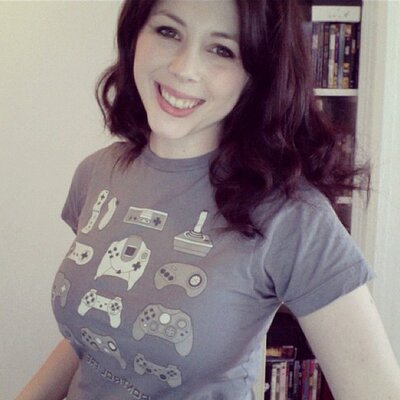
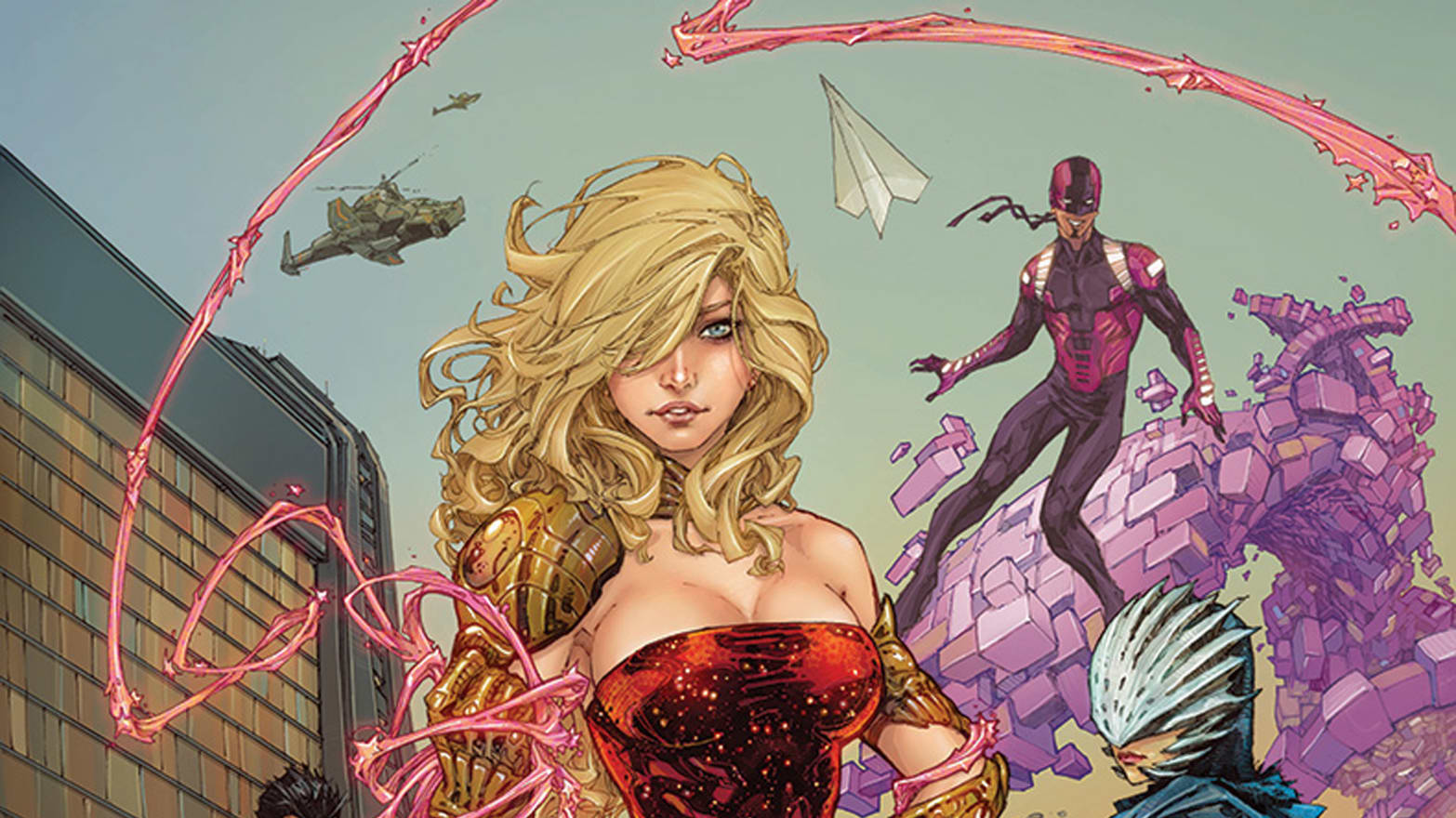

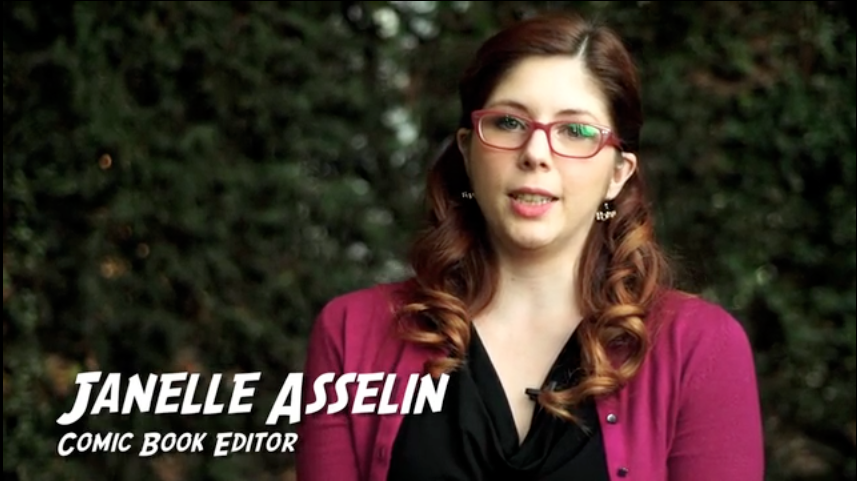
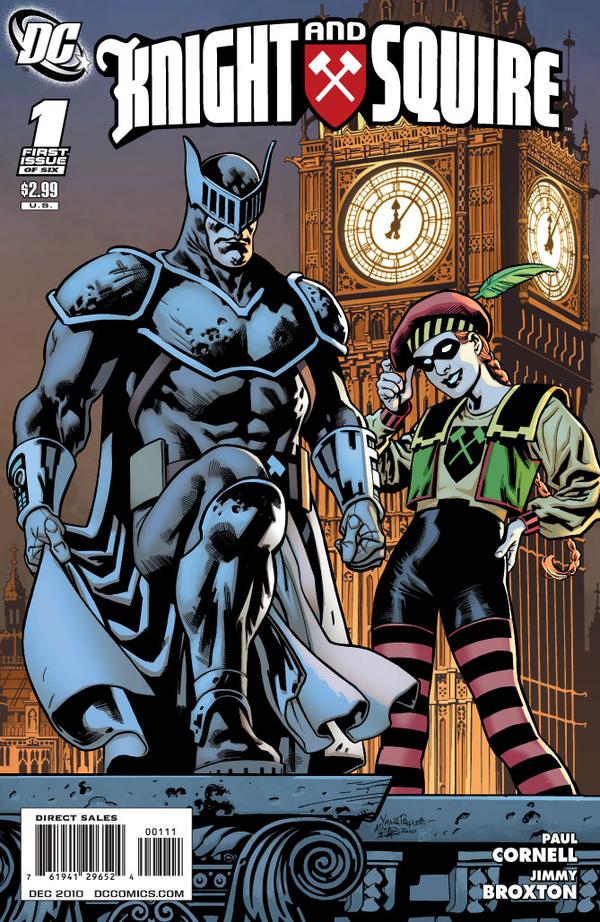
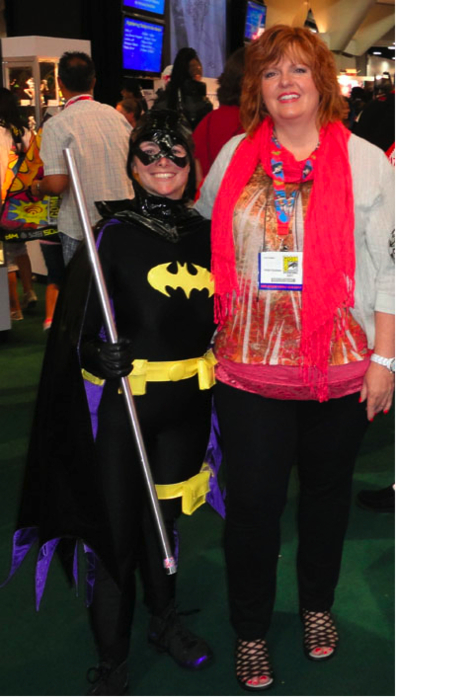
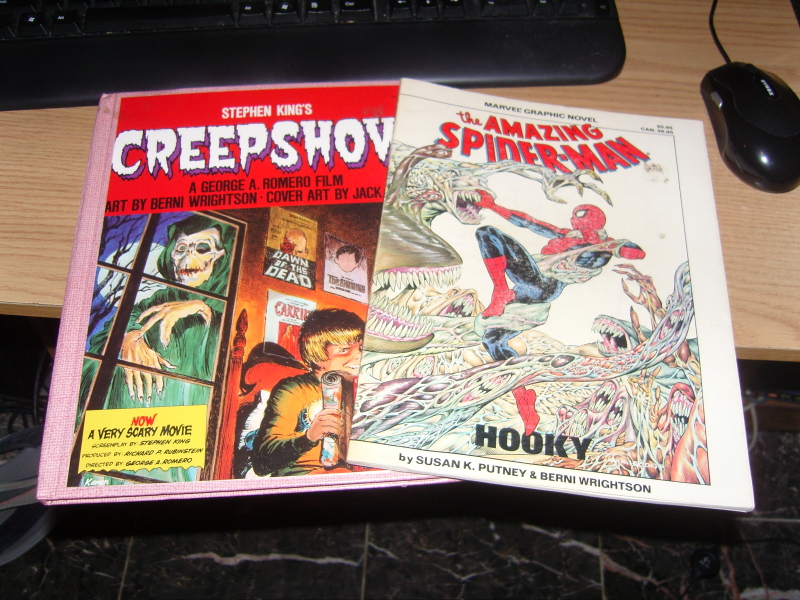
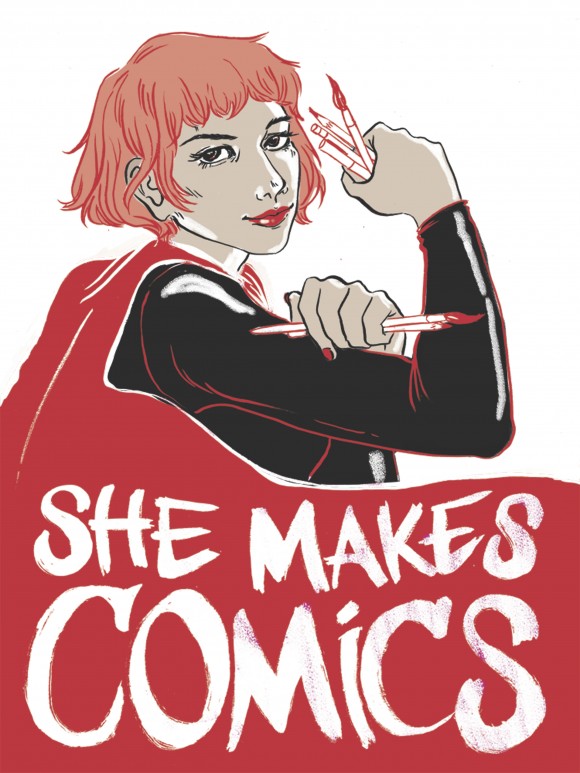
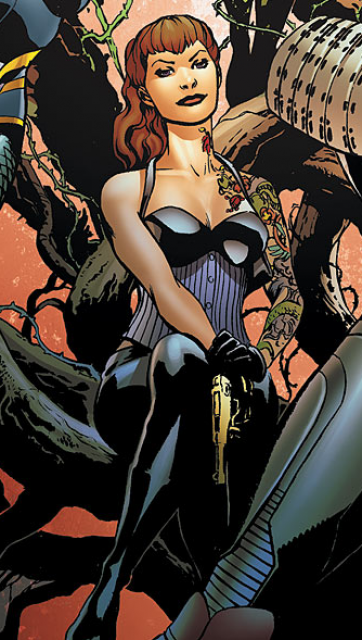




1 comment:
Post a Comment